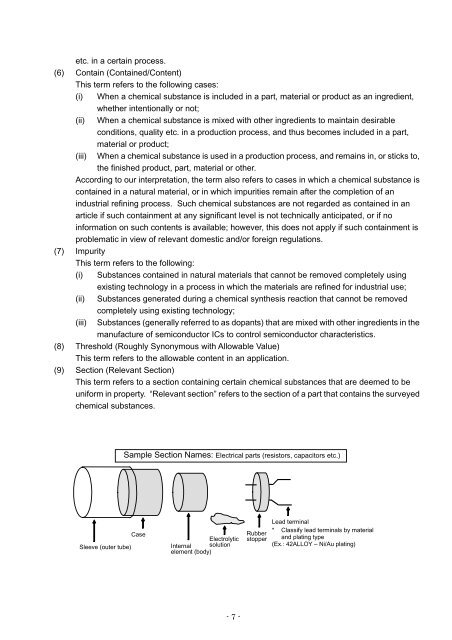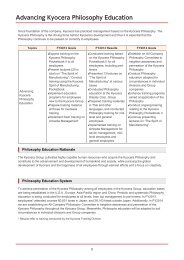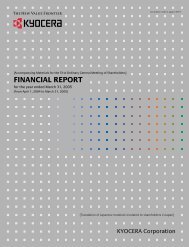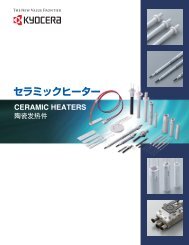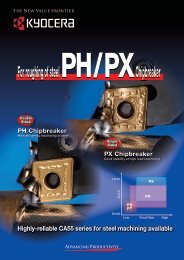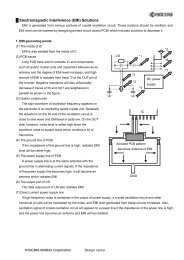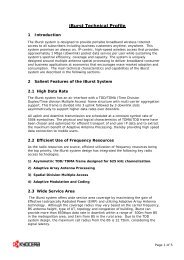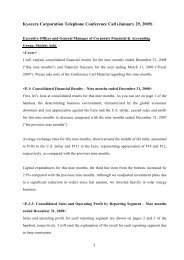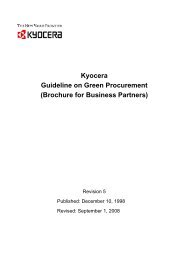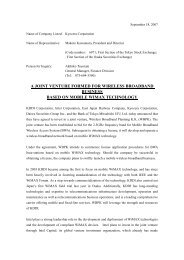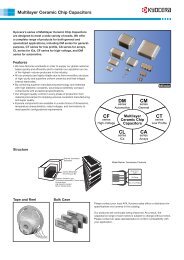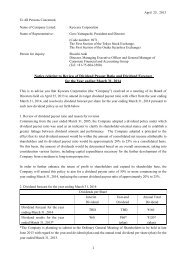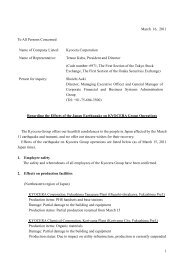Brochure for Business Partners - Kyocera
Brochure for Business Partners - Kyocera
Brochure for Business Partners - Kyocera
You also want an ePaper? Increase the reach of your titles
YUMPU automatically turns print PDFs into web optimized ePapers that Google loves.
etc. in a certain process.<br />
(6) Contain (Contained/Content)<br />
This term refers to the following cases:<br />
(i) When a chemical substance is included in a part, material or product as an ingredient,<br />
whether intentionally or not;<br />
(ii) When a chemical substance is mixed with other ingredients to maintain desirable<br />
conditions, quality etc. in a production process, and thus becomes included in a part,<br />
material or product;<br />
(iii) When a chemical substance is used in a production process, and remains in, or sticks to,<br />
the finished product, part, material or other.<br />
According to our interpretation, the term also refers to cases in which a chemical substance is<br />
contained in a natural material, or in which impurities remain after the completion of an<br />
industrial refining process. Such chemical substances are not regarded as contained in an<br />
article if such containment at any significant level is not technically anticipated, or if no<br />
in<strong>for</strong>mation on such contents is available; however, this does not apply if such containment is<br />
problematic in view of relevant domestic and/or <strong>for</strong>eign regulations.<br />
(7) Impurity<br />
This term refers to the following:<br />
(i) Substances contained in natural materials that cannot be removed completely using<br />
existing technology in a process in which the materials are refined <strong>for</strong> industrial use;<br />
(ii) Substances generated during a chemical synthesis reaction that cannot be removed<br />
completely using existing technology;<br />
(iii) Substances (generally referred to as dopants) that are mixed with other ingredients in the<br />
manufacture of semiconductor ICs to control semiconductor characteristics.<br />
(8) Threshold (Roughly Synonymous with Allowable Value)<br />
This term refers to the allowable content in an application.<br />
(9) Section (Relevant Section)<br />
This term refers to a section containing certain chemical substances that are deemed to be<br />
uni<strong>for</strong>m in property. “Relevant section” refers to the section of a part that contains the surveyed<br />
chemical substances.<br />
Sleeve (outer tube)<br />
Sample Section Names: Electrical parts (resistors, capacitors etc.)<br />
Case<br />
Electrolytic<br />
Internal solution<br />
element (body)<br />
-7 -<br />
Rubber<br />
stopper<br />
Lead terminal<br />
* Classify lead terminals by material<br />
and plating type<br />
(Ex.: 42ALLOY – Ni/Au plating)


